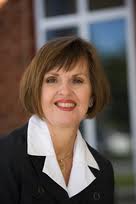Some Florida private schools face an unexpected dilemma this school year: Find extra dollars to pay for state college courses their high school students want to take – or deny them the option.
The problem stems from a new law requiring public school districts and individual private schools to cover tuition for students enrolled in the state’s popular dual enrollment program.
Though it’s unclear how many private school schools and students are affected, the change has left some schools curbing participation and others anxious about what they’ll do if local colleges, prompted by the new law, end up hiking charges.
The change “caught everybody off guard,’’ said Howard Burke of the Florida Association of Christian Colleges and Schools, and immediate past president of Florida Association of Academic Nonpublic Schools (FAANS). “This is a hardship for parents already paying taxes for public schools and paying for private school.’’
His association represents about 140 schools with an average of $4,000 to $5,200 in tuition. Burke said some of those schools are telling parents they now will owe an additional fee for dual enrollment to help schools with the unexpected costs.
“I think it’s obscene,’’ Burke said. “This should not be happening.’’
Dual enrollment lets students knock out college-level credits for free while they’re still in high school so they can earn college degrees faster and save their families – and the state – thousands of dollars.
Currently, there are about 65,000 high school students participating, up 20 percent since 2010-11. Before the change, districts and colleges received additional state funding for the program costs (excluding books and other materials). Private schools, meanwhile, had separate agreements with colleges that allowed their students the same access.
In recent years, however, state colleges lobbied for more money because they said they were losing an estimated $43 million to $58 million a year in tuition. Lawmakers approved a bill last spring that allows the colleges to charge districts a standard fee of $71.98 per credit. The law went into effect in July.
It’s up to each college to decide what to charge private schools, though most are asking for the same fee, according to the Florida Department of Education. Out of the 28 state colleges, 23 have agreements with private schools. Of those, 15 charge the schools a fee and eight do not. 
For private schools like First Academy, a 342-student K-12 in rural Leesburg, the new fee prompted school officials this fall to whittle a list of prospective dual-enrollment students from 12 to three – and to fork out an extra $800 for courses at nearby Lake Sumter State College.
“As a nonprofit, that starts taking chunks out of our budget,’’ said Principal Greg Frescoln, who frets that next semester could result in even more cost for the school.
It might also mean a tuition hike, something Frescoln wants to avoid. A third of First Academy students receive tax credit scholarships for low-income families. (The scholarship is administered by Step Up For Students, which co-hosts this blog). The scholarship covers the bulk of the academy’s $6,800 tuition, but raising tuition any higher “puts (parents) back in a situation where they can’t afford it,’’ Frescoln said.
Like other private school operators, he is calling legislators and crossing his fingers for a compromise.
One idea is to further limit the number of dual-enrollment courses students can take. Colleges already can restrict the number of students based on capacity.
Another option is for private schools to create their own dual enrollment programs. That’s what Sarasota Christian Schools in Southwest Florida did.
“It’s a little more expensive for us,’’ said Superintendent Jeffrey Shank. His preK-12 school pays four high school teachers, who also are adjunct professors with State College of Florida. But there are no college course fees or limits on participation, he said.
Students stay on the private school’s campus, each taking eight to 10 college-level classes a year in social studies, science, math and English. By the time they graduate, many have close to 30 college credits, Shank said.
So far, John Carroll Catholic High School in Fort Pierce hasn’t had to pay a fee, said Assistant Principal Linda Easom. But she’s not sure how long that will last. About 70 of the high school’s 400 students are dual enrolled at Indian River State College. The college did not return calls for comment.
There has been talk among private school operators of bolstering Advanced Placement options to help curb dual enrollment participation, Easom said. But she’s not in favor of the move.
“AP classes are great, but guaranteed college credit? Not unless you get a score of three or higher (on the AP test),” she said. “Dual enrollment – it’s guaranteed. You go, you pass, you get the credit.’’
Like district superintendents across the state, private schools and the associations that represent them plan to fight the new law.

Barbara Hodges of the Florida Council of Independent Schools said she has just begun to hear concerns from some of the 157 member schools.
“I think that what will happen is we’ll all be working together to see if there are means of impacting that legislation,’’ said Hodges, who also is president of FAANS, which represents 1,300 private schools. “It was not legislation that was kind to any of our schools.’’
Especially if it results in students being turned away from the dual enrollment program to save families money.
“At the end of the day, no one wants to do this,’’ she said. “It would appear to me that it’s cheaper for the state to educate students through dual enrollment than in the actual college. It’s a cost savings.’’



